Subterfuge is a wonderful thing – especially when applied to the prepping/survivalist concept. Many in the prepper club will go to great lengths to hide their goods and wares from prying eyes; we don’t need our gear sticking out and able to be mentally cataloged by others for potential theft.
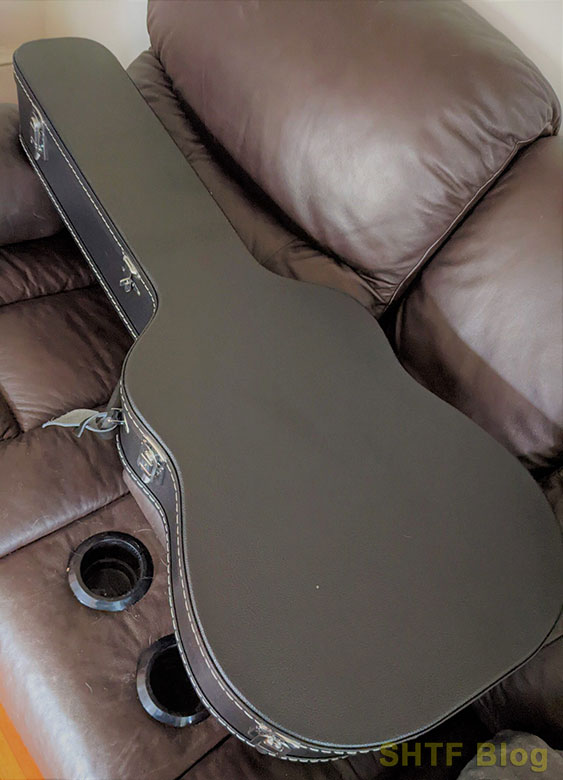
The ultimate level of subterfuge is repurposing camouflage; taking an item and modifying then utilizing it for an utterly different purpose than what the rank and file think – or know – the item is for.
One of the most innovative and convincing methods of camouflage can be seen with the excellent Cedar Mill Fine Firearms Discreet Concealment Guitar Rifle Case. While the long product title absolutely confirms what the purpose of this rig is for, even a close inspection of this case without verifying contents won’t give you the faintest clue what’s inside the case.
…and in our case, the case contains a full rifle, ammunition loadout, and a basic survival kit.
The possibilities are endless for this fine piece of deception hardware. Before we look into my interpretation of how to use it, let’s look at Cedar Mill and the rifle case itself.
No products found.
The Evolution of Cedar Mill Fine Firearms
Cedar Mill Fine Firearms evolved out of the topsy-turvy world of E-commerce. The owner, AJ Koenes, quit his 9-5 job, and with the help of a neighbor, got started on his own online sales company called Treasure State Prospecting, which centered on, of all things, metal and gold detection tools and gold nugget prospecting.
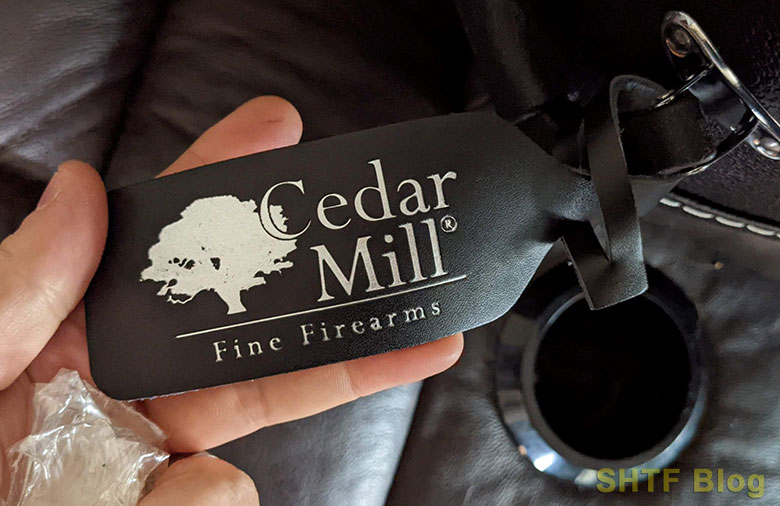
Being a lifelong Montana hunter, AJ knew he needed to protect his gear, so he started offering hot-rodded pistol cases to house the prospecting tools he manufactured. As time went on, he realized that prospecting was an older crowd’s hobby – and the older crowd didn’t shop online. However, his cases were selling like hotcakes – so the transition from metal detection to case manufacturing was a natural one.
Fast forward a few years, and even through Amazon profit cutbacks and COVID, Cedar Mills Fine Firearms has become an incredibly successful business for AJ, selling not just covert guitar cases, but full-on high end rifle cases, cool-looking stackable pistol cases, cleaning kits, and a few AR accessories.
The Guitar Rifle Case
For many, many decades, people have been using guitar cases for carrying items other than guitars. Pop culture and lore tells of gangsters and assassins hiding Thompson submachine guns and other firearms in guitar cases. Who can forget the famous “Guitar Case Full Of Guns” from the 1995 film “Desperado”?
The point of fact is this: who sees someone walking down a street with a guitar case and thinks there’s anything in it but a guitar? Especially when the “guitar case” is a convincing replica?
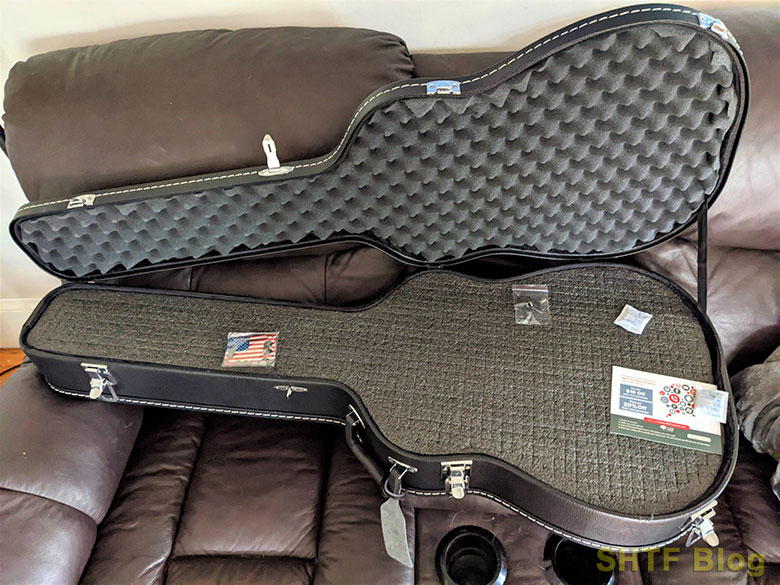
Cedar Mill Fine Firearms has done a fine job in recreating a jumbo acoustic guitar-sized case. As a guitar player myself, when I pulled the Guitar Rifle Case out of the packaging, I was immediately impressed with the attention to detail that Cedar Mill put into the case.
While the latches and hinges are a bit different than an actual guitar case (at least any of the guitar cases I had available to me for comparison), the construction and covering materials are top notch and absolutely pass the sniff test for even an actual guitar player.
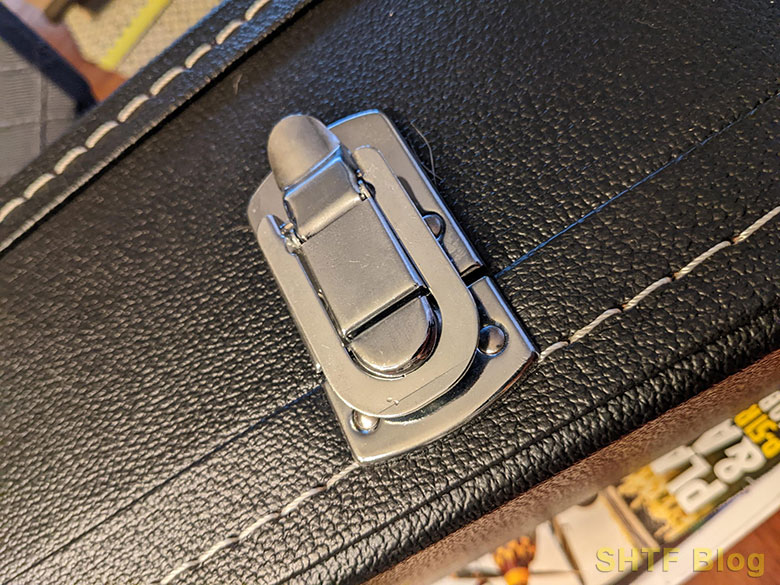
In documentation that comes with the case, Cedar Mill states that the cases themselves are built by a company that actually builds guitar cases – a great move when maintaining the ultimate in guitar-to-rifle subterfuge!
Starting from the outside: the Discreet Concealment Rifle Guitar Case is built of glulam poplar to safely absorb light impacts and ride out abuse. The black exterior tolex-type material is a dead ringer for other high-end guitar cases, and is well applied and stitched.
The handle is a sturdy and comfortable molded plastic (wooden or leather handles can break or wear over time), and the hardware – including the “feet” on the bottom/standing surfaces of the case – are all stainless steel and lend a well-appointed air to the rifle case. The hinges and latches appear well made and have worked in concert with each other well so far. Cedar Mill has provided security in the form of a padlock latch as well as a latch with an integral keylock – yes, keys come with the case.
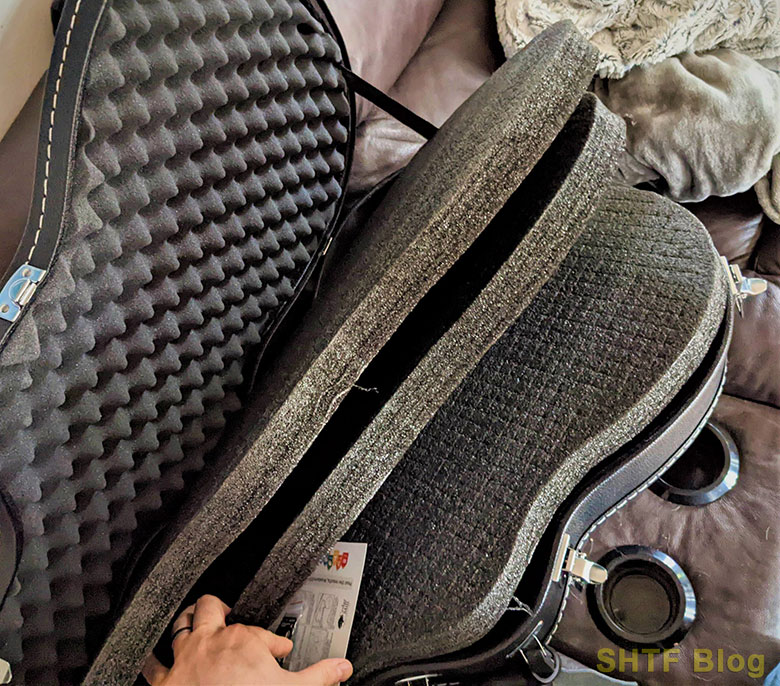
When you open the Discreet Concealment Rifle Guitar Case, we see where the differences lie between the case and an actual acoustic Guitar case. Your eyes are treated to a wall-to-wall sea of three layers of dense EPE foam, pre-cut into easily-removable grids that are about ½” x ½ ” square.
Each of the foam layers is 1 ¼” thick, giving your case a total working depth of 3 ¾”. EPE foam is great because it doesn’t absorb the oil off your firearm like other file cases will; the oil stays on your gun where it belongs. The interior of the rifle case lid consists of a sturdy egg carton type foam that is removable if needed.
Interior measurements of the area you have to work with are as follows: 43 ½” long, the “neck” portion of the case is 5 ¼” wide, the first shoulder area is 13 ½” wide, with the widest part of the case being 17 ¼” wide. This is PLENTY of room for even a full-length AR with a full optics suite.
All in all, the Discreet Concealment Rifle Guitar Case is well thought out and executed nicely for its appointed mission.
Making My Case
With the three levels of foam available to me, My mind took a while to sort out what to do with all the available room inside the case. The case could be so much more than just a rifle case, y’know? Thoughts filled my head with tools, gear, magazines, lights, knives, and accessories danced around my head in a crazy mambo line of awesomeness. However, the realization quickly came that all-up weight could be an issue, especially when a loaded AR with an optic and three loaded mags starts looking at 10-12 pounds minimum.
The case itself isn’t exactly a featherweight, as it seems to be a bit overbuilt compared to many regular guitar cases – not a bad thing, but you have to remember you’re carrying all that weight via one small handle; there are no provisions for shoulder straps. Ahh, the price of ultimate incognito.

I decided I had to focus on what I wanted to do with the case and once I had a basic plan in mind, I needed to err on the minimalist side to save weight. Once I came to terms with the weight of the package, I could add or subtract from there.
After starting the interior jigsaw puzzle with an LVPO-equipped AR, I decided to make an under-the-radar basic grab-n-go kit that I could use to throw in the back of a car or carry around and not attract attention. I decided on a rifle and 3 to 4 30-round mags, basic stop the bleed gear, an Otis AR buttstock cleaning kit, and a dry box I could use for basic survival gear: a compass, knife, Sawyer Mini water filter, fire starting gear – you get the idea.
After fiddling with the layout, I noted there was a bit of unused space left, so I added my CMMG .22 conversion kit, two mags, and a 100-round box of .22 LR ammo. I keep the conversion kit and its mags in a mil-surp triple 30-round AR mag carrier, so in a pinch I could easily substitute the conversion kit for three extra mags.
Nurse, Scalpel!
Satisfied with the general layout, I grabbed the tools needed to start the operation – really just a sharpie marker to trace outlines and a razor blade to cut the foam. Friends of mine who have performed similar routines told me that an electric carving knife works really well for cutting outlines in rifle case foam; I used a standard utility knife blade since I wasn’t blessed with the possession of a fancy turkey knife.
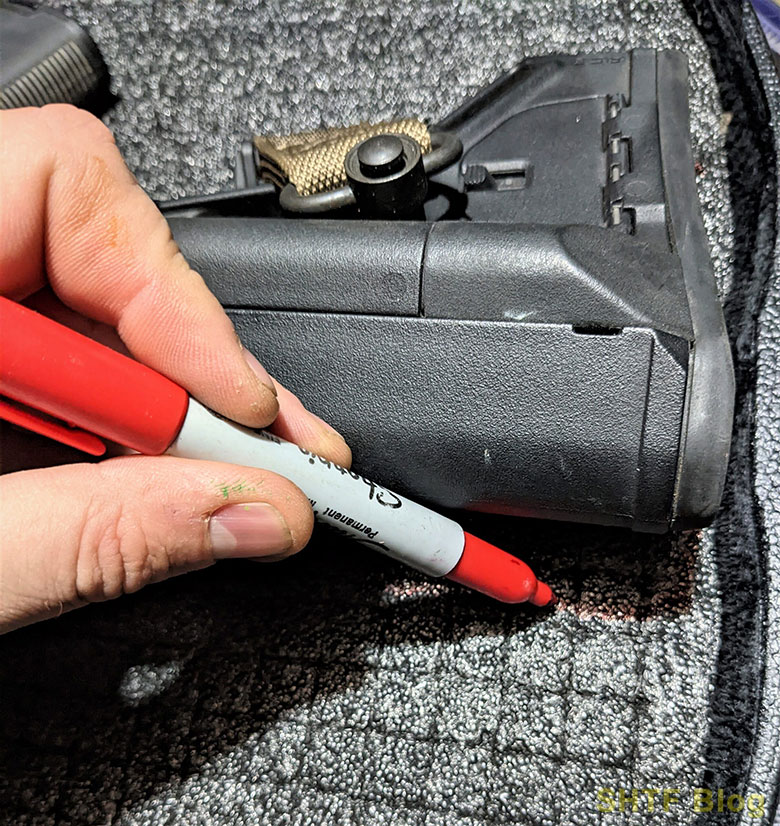
Following the instructions provided with the Rifle Guitar Case, I flipped the foam over and traced the outlines of the new payload in a red sharpie, making sure to stay tight, on the small side. Remember: you can always take more foam away, but putting it back is, well, not a thing. (Cedar Mill Fine Firearms does sell replacement foam if you booger things up, or if you want to engineer different kit setups for the case.) Once I lifted the traced item up off the foam, I actually used a silver sharpie to trace along the inside of my initial lines, just to make sure I was cutting the holes small.
Satisfied with the outlines, I grabbed my razor blade and started cutting. The new blade sailed through the EPE foam easily, and cutting small sections out at a time made sure I kept control of what was coming out; I didn’t want to overrun anything.
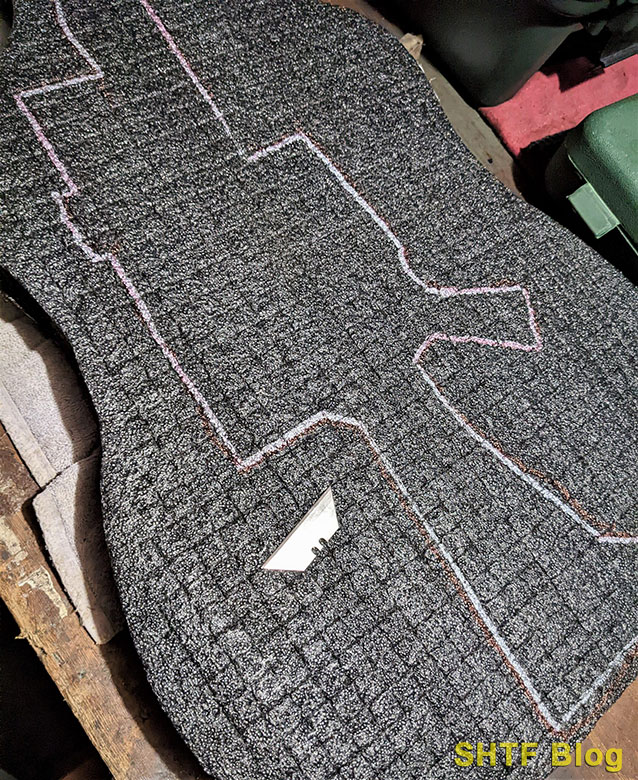
I worked slowly and fastidiously and was rewarded with clean, reasonably precise cuts that hugged the rifle and other contents tightly when I installed them in the guitar case and foam. The other gear choices were quickly cut out, and the finished product was superb; everything fit in its place with no movement, and with the three layers of foam, I have additional room to put more gear in if needed. However, I didn’t relish the thought of carrying this fully loaded discreet rifle case over long distances via just the handle – though I’m sure the case is sturdy enough to handle the stresses.
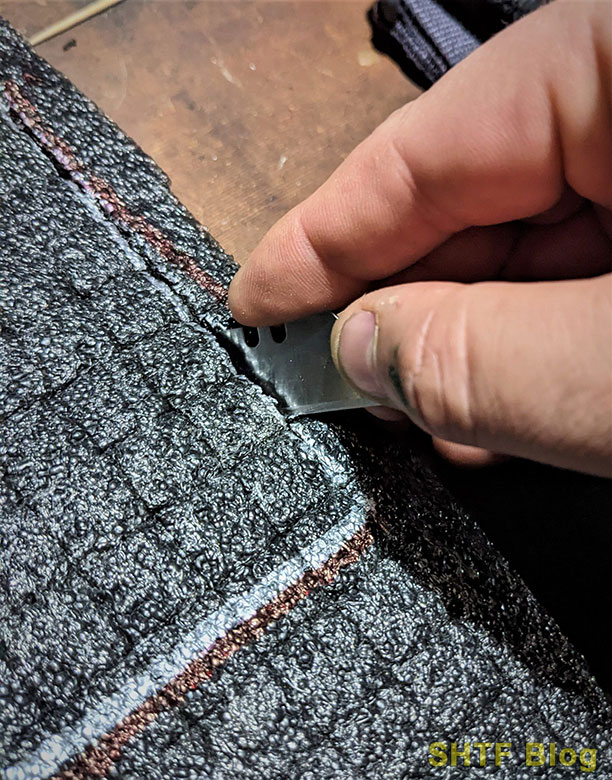
My end layout was the rifle laying on its side, a square cut to hold three 30-round magazines, and the cutout for the CMMG .22 Conversion kit on the top layer of foam. Stripping away the top layer of foam reveals the dry box, cleaning kit, and .22 ammunition. I originally cut the rifle so it only could be stored without a magazine in place, but I thought, “oh, what the hell” and made the cut so I could keep a 30-rounder in the rifle if needed.
Unfortunately, this cut went into the hole I made for the three 30-round magazines, so if the rifle has a mag in it when stored, I will still only be able to have three total magazines. Not a problem; there’s plenty of space left over in the foam if I decide later to add space for extra mags.
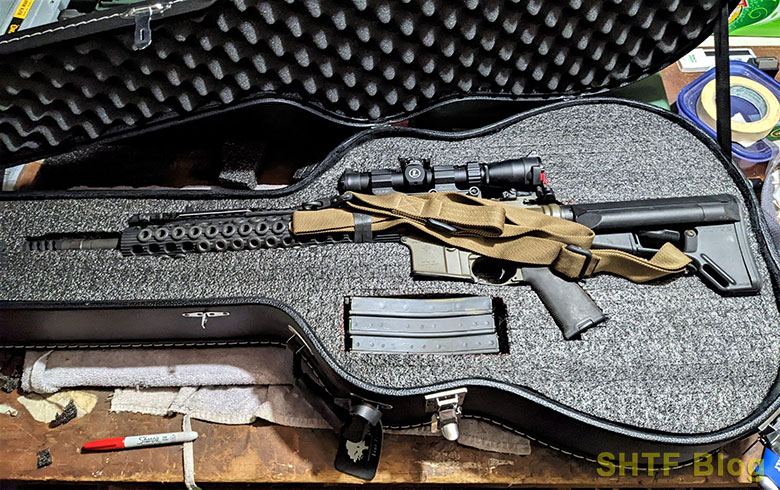
At the end of it all, I realized that before I made any cuts, I was totally overthinking the whole thing. Dream up a basic load for the case, lay it out, trace it, and start cutting. It’s not as daunting as it seems – and the precut grid squares in the foam make things super simple. Give it a go!
Pros and Cons of A Discreet Rifle Case
With anything in life, there are always bonuses and tradeoffs – and this Cedar Mills Fine Firearms Discreet Concealment Guitar Rifle Case is no different.
Making the case for the case, we have its obvious benefits – its designed purpose. The user has the ability to use camouflage and subterfuge to conceal the case’s true intent – the premise is nobody thinks that a guitar case will be holding a rifle. Plain and simple.
The rank and file believes what they see without applying critical thought – why would an item not be what it seems? The guitar case’s user takes advantage of society’s confirmation bias and utilizes it to full effect, providing an outstanding method of concealing survival gear, firearms, money, anything that fits, really. Oh yeah, it could even hold a guitar if you’re into that sort of thing.
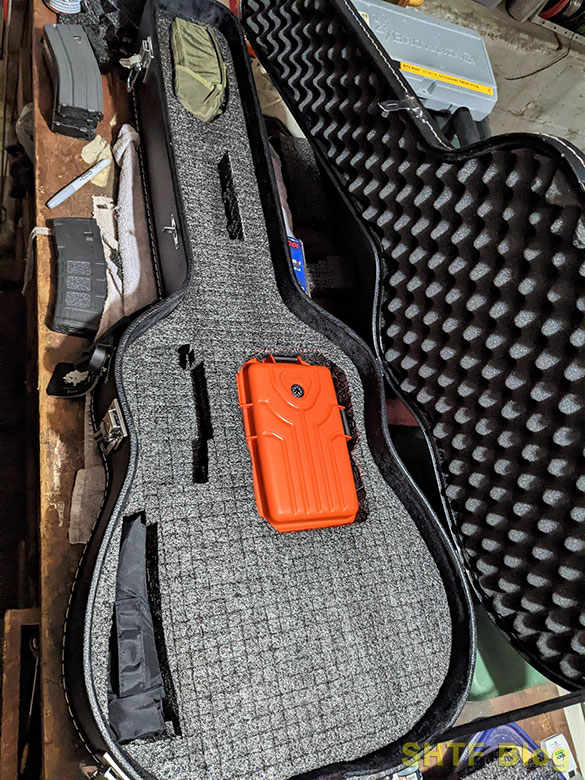
But are there any negatives to this sort of product? Well, yes – a big one. You’re trading one high value target for another. Guitars – especially ones stored in high-quality hard cases – are usually far from cheap. A good Gibson, Martin, or Guild acoustic can easily overrun the $1,000 mark, making them valuable items for theft.
Anyone breaking into your car or house probably would be elated to find a rifle case or a guitar case – or in this instance, both in one shot. Thefts often prioritize these high-dollar items – so any unsavory characters will certainly grab a guitar case with glee, only to find out after the getaway they’ve heisted your prized bug-out rifle kit!
Wrapping it Up
Overall, the Cedar Mills Fine Firearms Discreet Concealment Guitar Rifle Case (man that takes a while to type) is impressive in design and execution. This isn’t a cheap Wal-Mart plastic rifle case; the guitar case is finely built and is quality gear. I’ve emailed back and forth with Cedar Mills Fine Firearms to ask questions about the case, and found them to be attentive and responsive, so I’m sure customer service will be top notch – I had zero issues with the case (a happy byproduct of sourcing quality gear – buy once cry once!) so it’s an excellent chance you’ll have the same happy experience.
Speaking to our target prepper/survivalist audience: this case probably isn’t a rig you’d build a full grab-n-go bug-out kit with. Though it’s a great way to keep things away from prying eyes, the idea of grabbing a big guitar case stocked up with like 40 lbs of survival gear and high-tailing it isn’t appealing to me personally – especially when there are no shoulder straps to work with, just the one carrying handle.
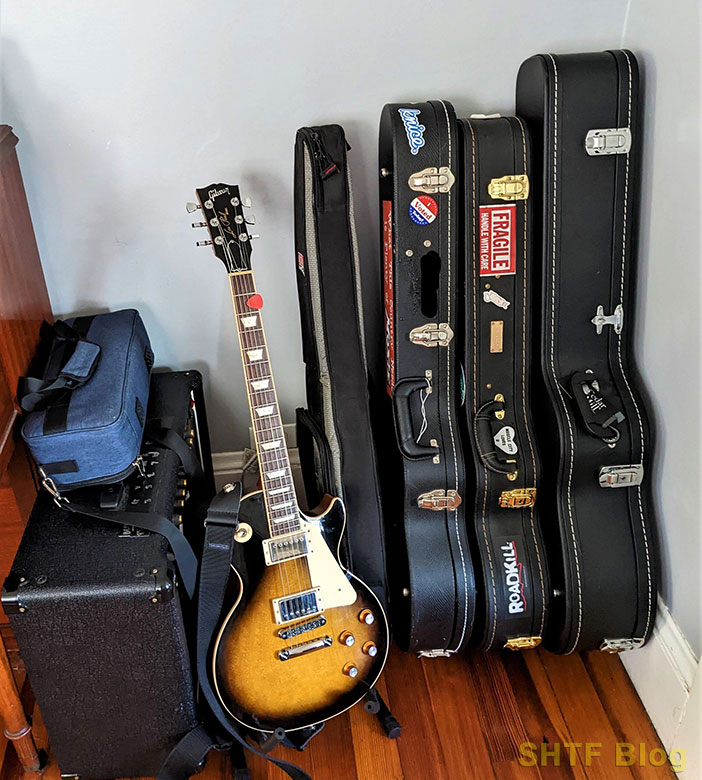
Where this case would shine in application is a bit different. The Cedar Mills guitar/rifle case would be a Godsend for the prepper who has a small apartment in an urban location; a rifle, spare mags, and whatever other kit is needed is able to be available yet hidden from visitors – unless the cute girl you invited over from the bar sees the case and asks you to play “Wonderwall.”
Another great employment of the Cedar Mills Fine Firearms Discreet Concealment Guitar Rifle Case is the ability to store arms in your vehicle, especially while traveling. If it’s visible, yes it’s a possible break-in target. But it meets the requirements of a locked case, and if you get pulled over while driving across state lines to another location you can legally own the firearms, an officer is far less likely to harass you if they just see a guitar case in your car. Though the officer may ask you to step out of the car and ask you to play “Wonderwall.” It’s a hazard all guitar owners face.
Also, if you have one gun that you use for everything (home defense, target shooting, hunting, bail-out gun, etc.) and goes with you everywhere, this case is a stellar option to keep your rifle/handguns in – easily transportable yet incognito, and makes for another great option in the list of bedroom gun storage ideas.
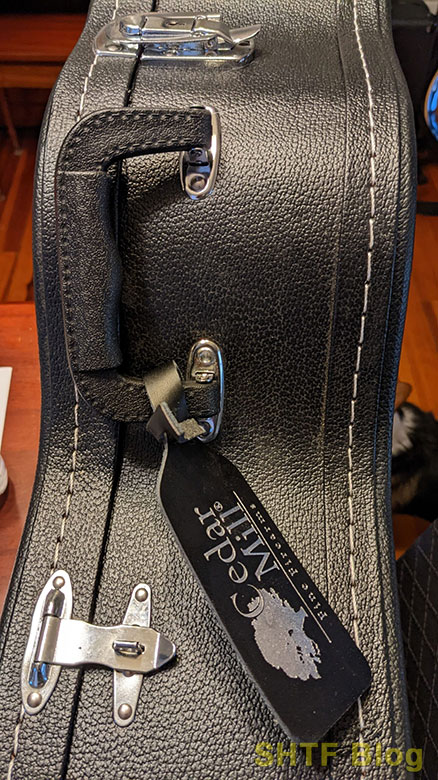
If you have kids running around the house, with the integral key lock or padlock options, the Discreet Concealment Guitar Rifle Case is a fine way to keep a security firearm readily available yet safe and quickly accessible.
All in all, this case is a fine, useful concept, well executed in this product’s instance. It’s a one trick pony, but that trick is a damned good one. Mine will certainly find utility around my house; one of these fine incognito cases should absolutely be on your list to Santa to accentuate your preps. Even if you don’t know how to play “Wonderwall.”
